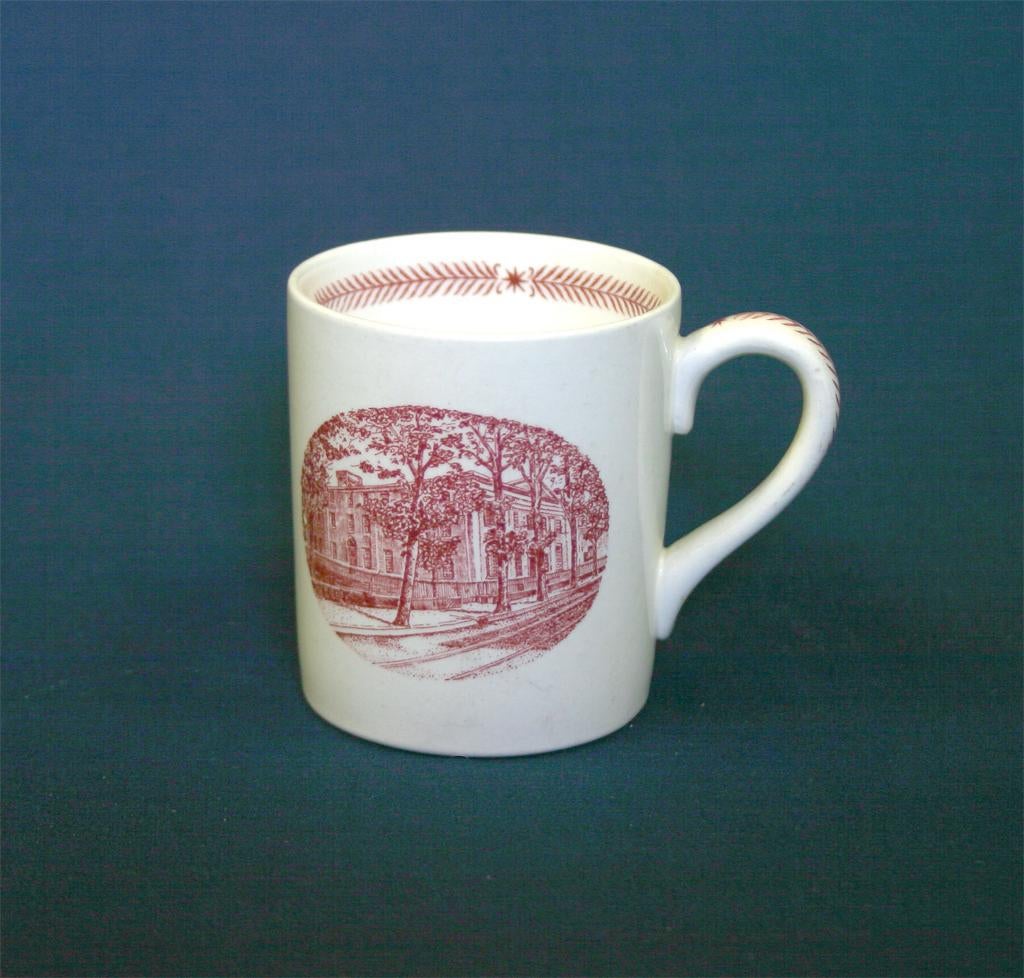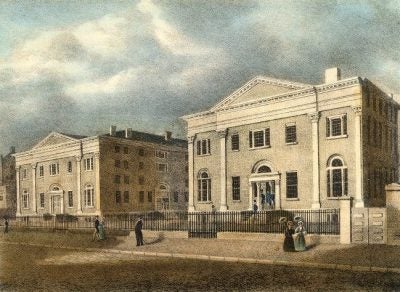Artist: Howard Carter Hill (1912-1968)
Howard Carter Hill drew the sketch appearing on this University of Pennsylvania Bicentennial Wedgwood china demitasse cup which depicts Penn’s College Hall as it existed on the University’s Ninth Street campus in 1861. He was born in Collingdale, Pennsylvania in 1912. He attended the School of Fine Arts at the University of Pennsylvania, winning the Architectural Ornament and Archaeology Prize at the end of his last year in the School of Fine Arts. Hill earned his degree of Bachelor of Arts in Architecture in 1935.
After graduation, Hill worked in Paul Philippe Cret‘s architecture firm until 1937. He opened his own firm in 1939 and later became the head architect for Fidelity Bank. Hill was a member of the Philadelphia Chapter of the American Institute of Architects and the Pennsylvania Society of Architects. He was also a member of the Civil Service Commission of Glenolden, Pennsylvania, and a former president of the Interboro School Board. He died in 1968 at his home in Glenolden.
Subject: College Hall, Ninth Street campus, as viewed in 1861
In 1828 the Trustees of the University commissioned William Strickland to replace the outdated building at the University of Pennsylvania’s Ninth Street Campus. The President’s House had been renovated in 1800 by Benjamin Latrobe to house both the Medical School and the College. Strickland concluded that the best plan was to demolish this building and build the new home of the School of Medicine on the same spot. In 1829 the trustees commissioned Strickland to build another new building at the Ninth Street campus, this time to house the College. Both buildings were designed in Strickland’s favorite style, Greek Revival. College Hall and the Medical School were situated across from each other on the University’s second campus.Architect: William Strickland (1788-1854)


